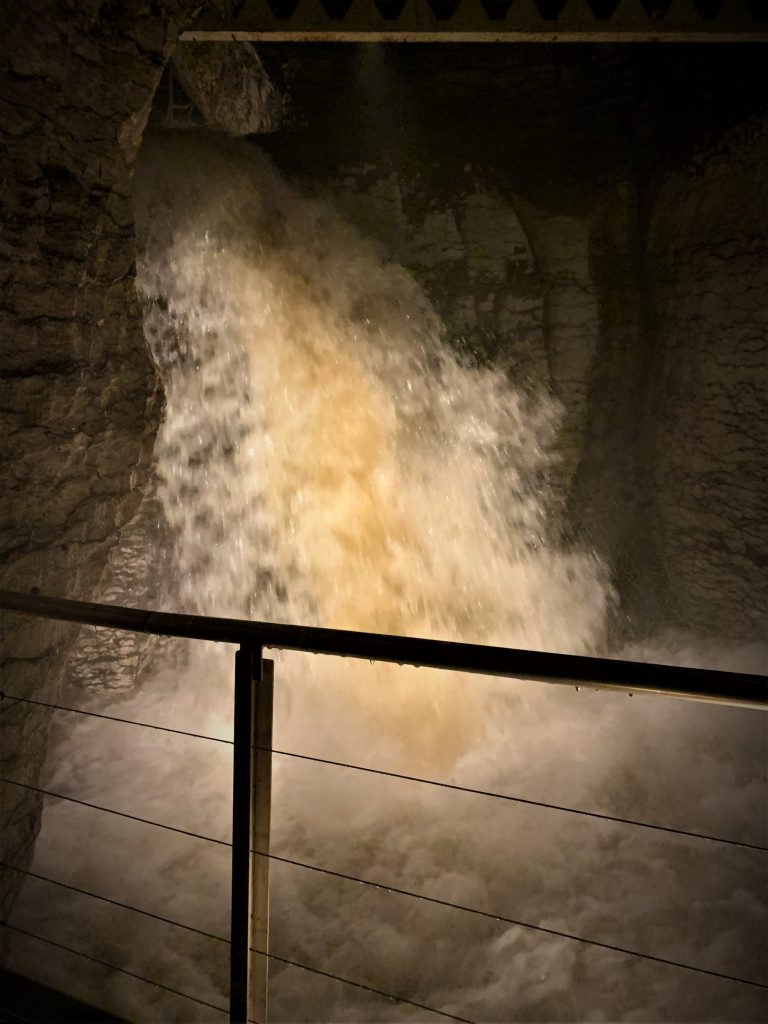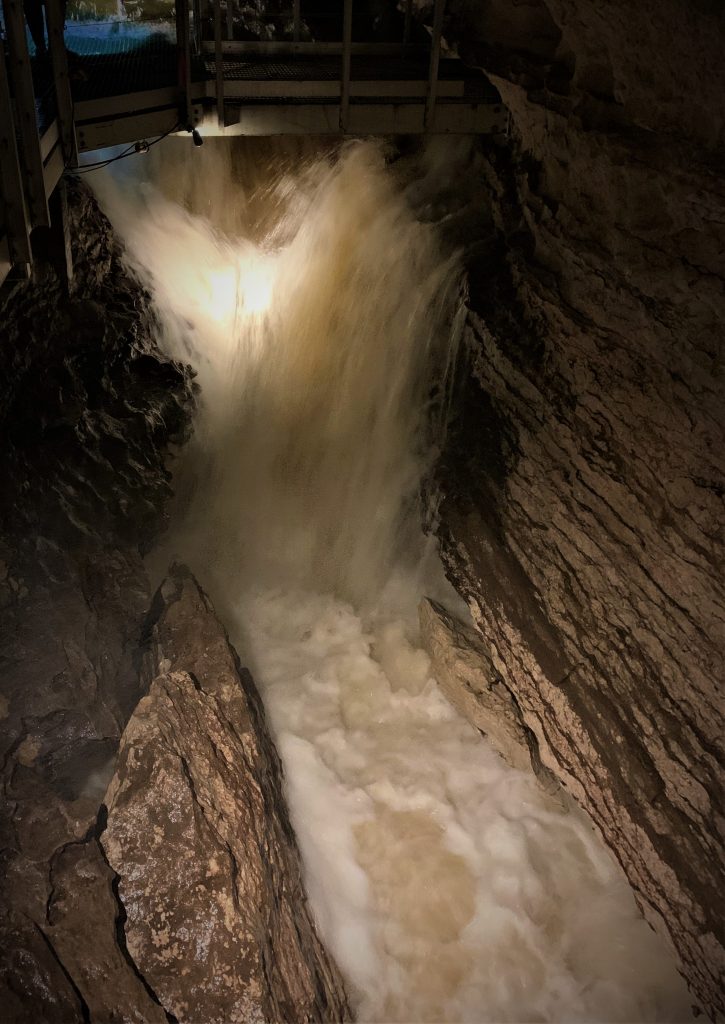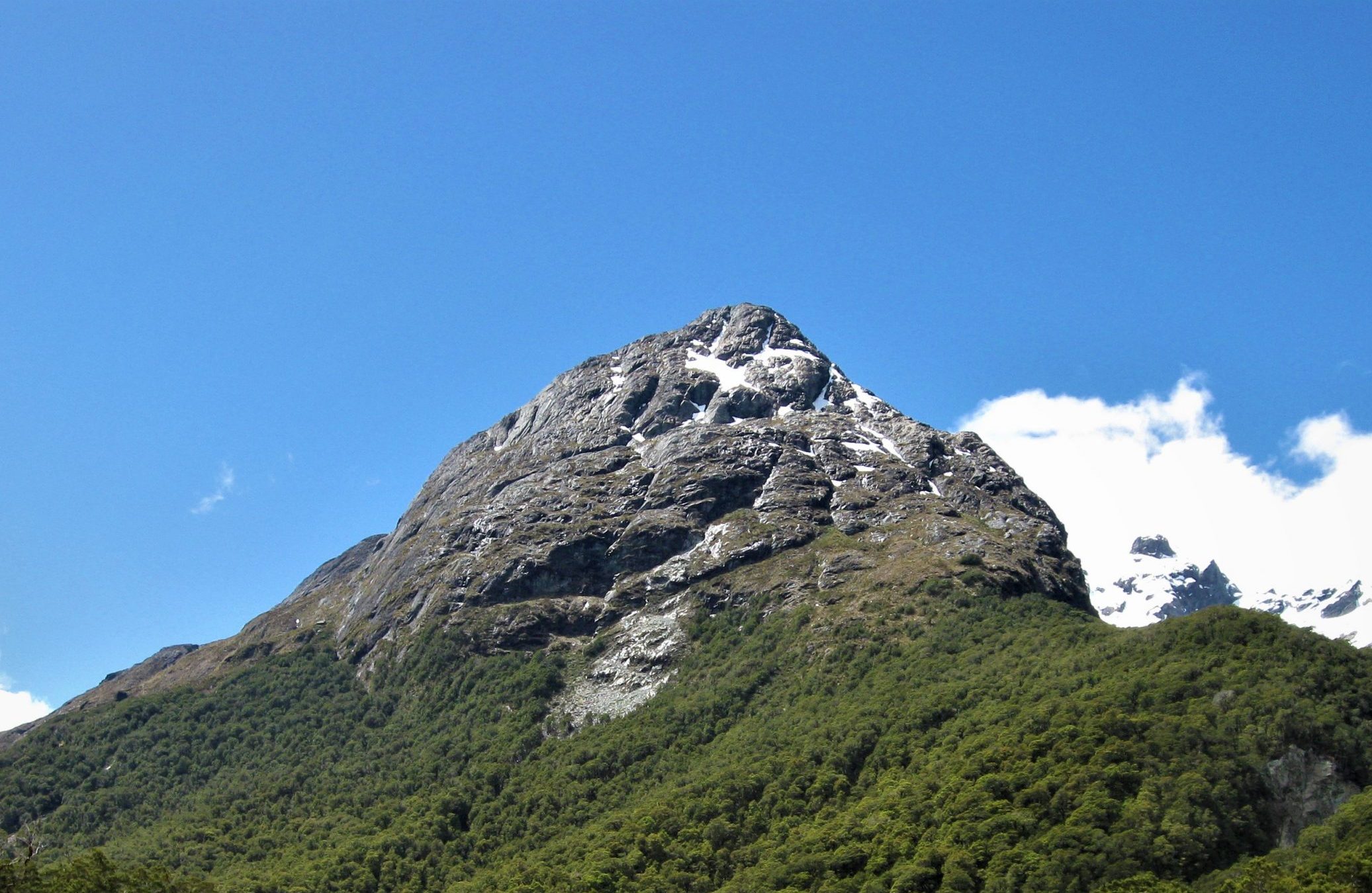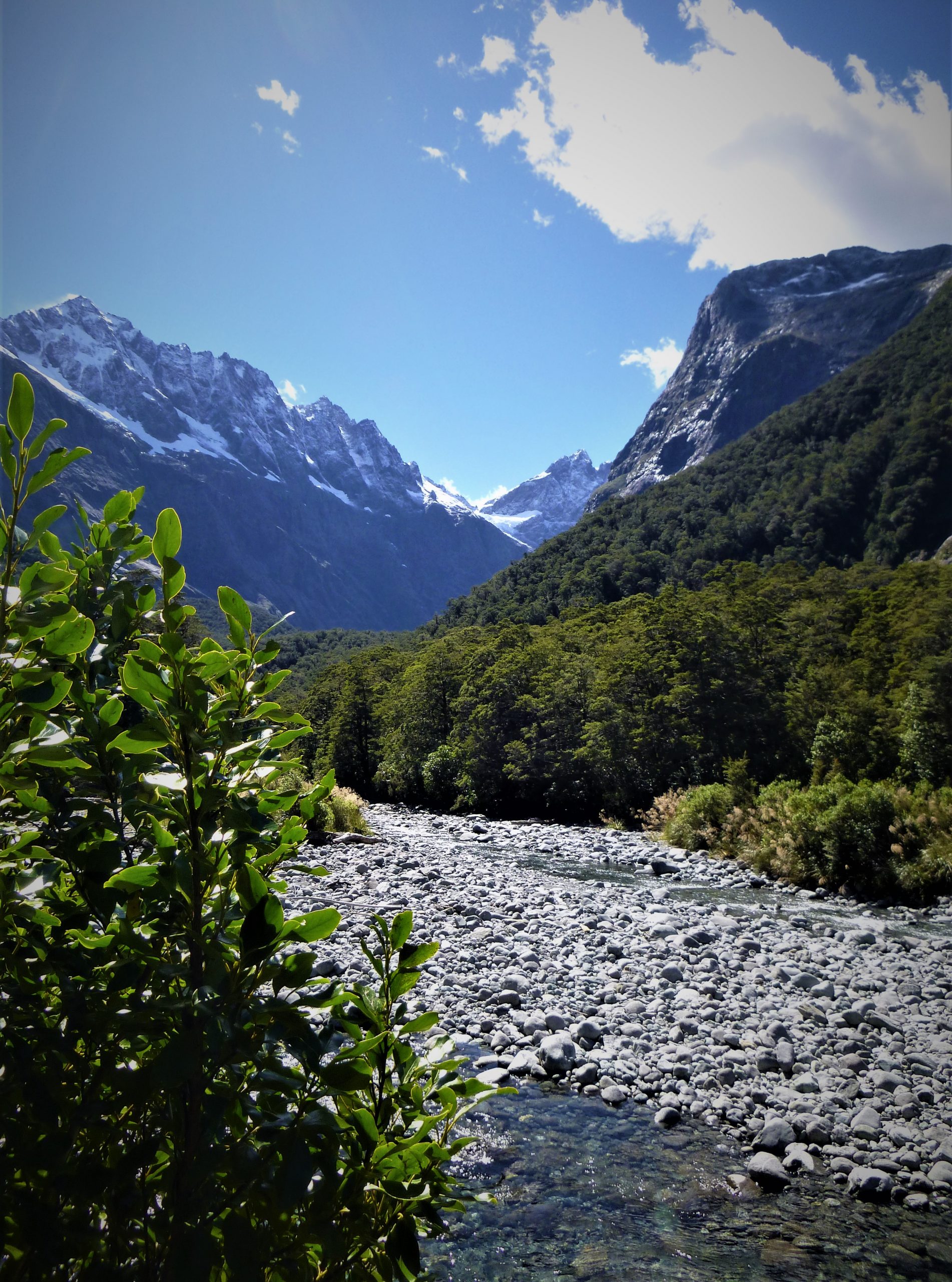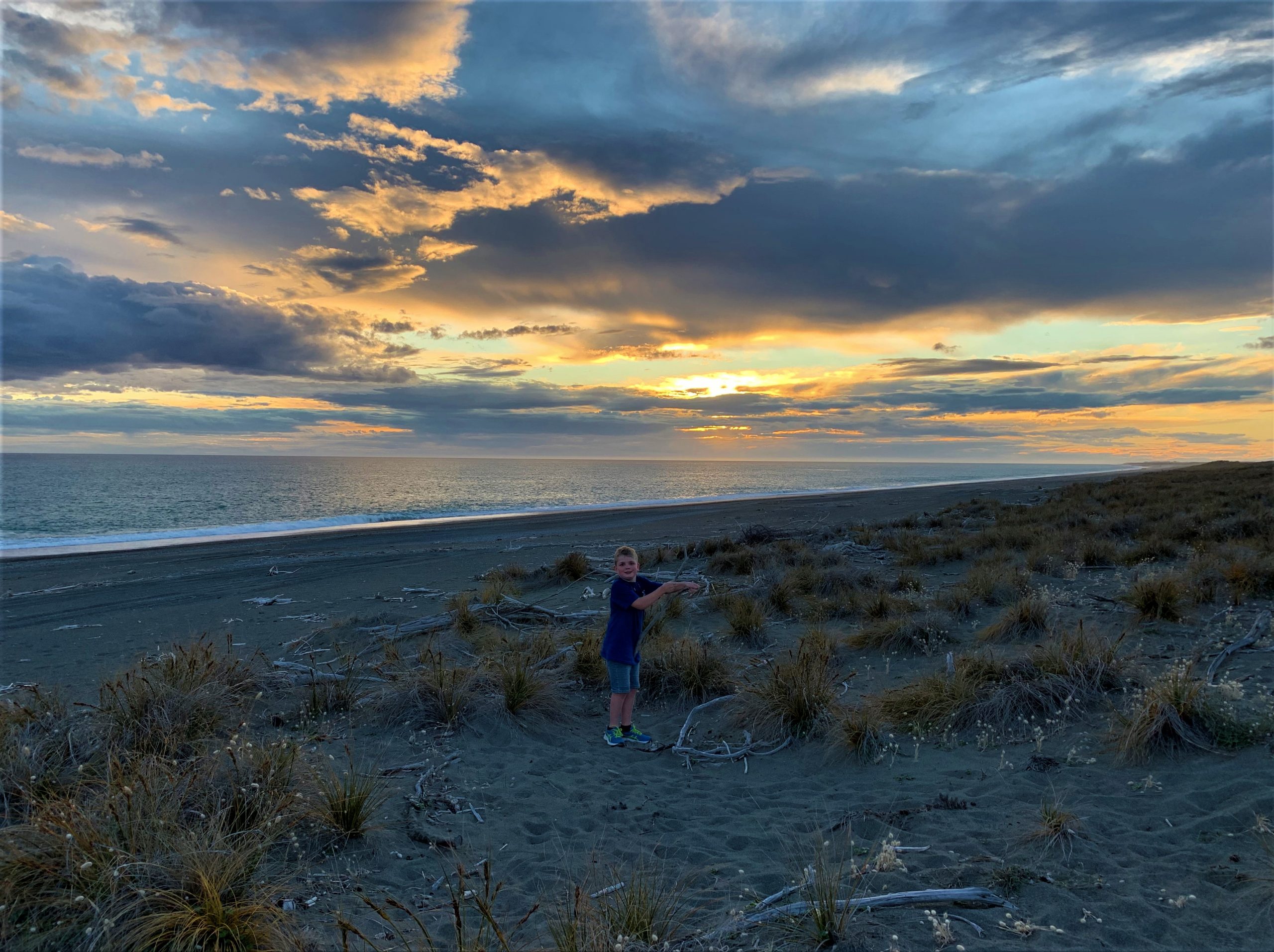“On a Mish” #288 Raging Waters. Te Ana-au (Glowworm Caves). Fiordland National Park. 25.6.2021. To witness Fiordland rain is a real treat. The amount and power of the water boggles the mind with its relentless rage. Before 2020 I would look forward to seeing the watery show in person. A heavy rain warning for Fiordland meant my excitement started to build just like the storm out in the Tasman Sea. On both the Routeburn and Milford Tracks I had a front row seat many times for rain events that produced more than 400ml or more in 24 hours or less. On rare occasions I have been witness to more than 50ml in a single hour, an experience never forgotten!
While Track Manager on the Humpridge Track I would wonder what damage the storm would do to the track. A even though I was probably going to be the one cleaning up the mess. I still got excited knowing there wasn’t anything I could do, so I just appreciated the free entertainment. But when it comes to the raw force of a Fiordland storm, nothing could match those I faced head on while working on the Fiordland Navigator in Patea / Doubtful Sound. Being face to face with a monster producing 70 knot winds at sea level shows you that Mother Nature is boss and we simply live around (or away from) her fury. Unfortunately now a heavy rain warning can mean no work. The Aurora Caves (Glowworm Caves) are a great way to show people what water can do over time. The fact that water has slowly worn its way through the mountainside is very impressive when seen on a tour of the caves. The unfortunate part is that when it rains the caves are prone to flooding. It makes sense as all that water has to go somewhere, and the enclosed nature of the caves mean the Tunnel Burn (river in the cave) goes from a bubble to a roar. It would be awesome to be able to show tourists this, but most don’t enjoy being soaked by freezing cold water. A couple of times I have been at the caves in high flow situations and the additional water in the Tunnel Burn is a real gem to show people. A positive about a day when high water has closed the cave is the times when we (the guides) head over to the other side of Lake Te Anau to check what’s going on in the underground world.
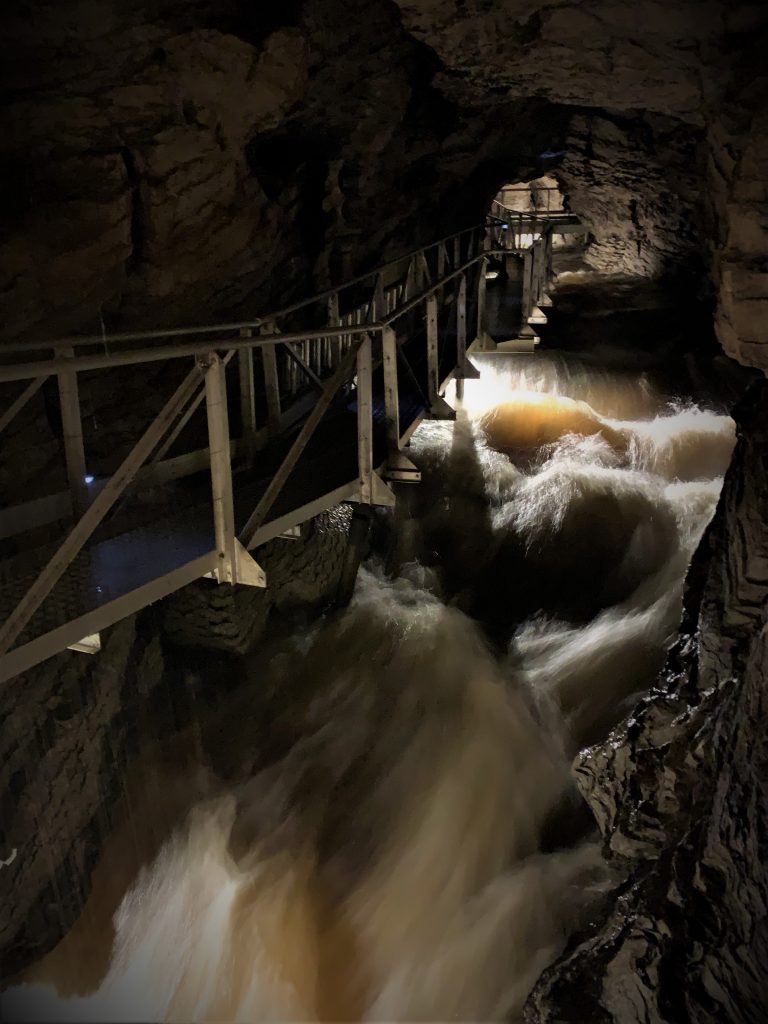
After a dry summer guiding in the caves the stars finally aligned and a storm hit the Murchison Mountains a day before I had work. As expected the water level closed the caves to the public, but we had to go check out the state of the caves and the little boats at the top of our walkway. Heavy rain smashed the front of the Luminosa (caves boat) as we crossed Lake Te Anau. The side streams and rivers of the range were pumping dark brown flood water into Lake Te Anau, which rose about 20cm in the time we were at the caves (not long!). The first part of the walkway was under the flow of the Tunnel Burn, something I hadn’t seen before. After shimmying over the water I got past the flooded section and continued on further into the cave. Two waterfalls are passed when making your way to the grotto at the top of the cave walkway, and on this day both were very angry. Heard way before seen, the first and biggest waterfall was thundering its way down into the pool at its base, and to look at it meant a blast of water mist to the face. Up at the grotto the water was rolling over top of the top landing and the punts were near the roof of the cave. I really needed to see all of this to understand why the caves get closed after heavy rain, and now I fully understand why! I feel lucky that I can see the caves when enraged, but as a guide I like to show people the power. Luckily the water dropped a couple of days later and we could start taking people back to the caves, but I do wish somehow we could show those people the true power of Fiordland water during and after heavy rain…

